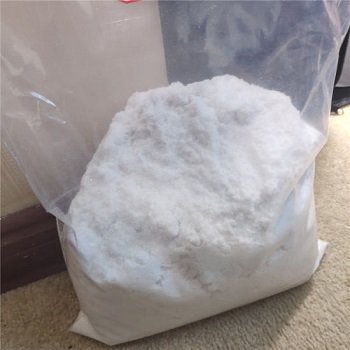silicon dissulfide hybrid mixture
Silicon disulfide hybrids are driving exciting breakthroughs in both electronics and energy storage. As researchers continue to experiment with innovative materials, this compound stands out for its ability to improve performance while maintaining sustainability. From boosting battery life to enhancing conductivity in devices, silicon disulfide is opening pathways for stronger, lighter, and longer-lasting technology. For industries focused on efficiency and environmental balance, its potential can’t be ignored.
Understanding Silicon Disulfide Hybrid
Silicon disulfide (SiS₂) is paving its way into advanced technological applications. This material’s unique makeup and impressive properties make it a powerful option in electronics and energy systems. To truly appreciate its benefits, let’s explore its chemistry, structure, and growing real-world applications.
What is Silicon Disulfide?
Silicon disulfide is a chemical compound combining silicon and sulfur, with the formula SiS₂. At its core, this inorganic substance exists as a polymeric material, meaning its molecules connect to form long chains. It showcases exceptional properties, such as high thermal stability and resistance to chemical reactions.
In terms of appearance, silicon disulfide is typically a pale yellow powder and is noted for releasing hydrogen sulfide gas when exposed to moisture—a property that highlights its reactive nature. Learn more about silicon disulfide here.

Chemical Structure of Silicon Disulfide
The molecular structure of silicon disulfide greatly influences its attributes. SiS₂ consists of one silicon atom bonded to two sulfur atoms in a chain-like formation. This molecular setup creates “SiS₄ tetrahedra,” forming infinite chains by edge-sharing. This one-dimensional structure explains its strength, durability, and versatility in different environments.
The compound also has a relatively low molecular weight of 92.2 g/mol, contributing to its efficiency in specific applications. Explore detailed molecular data on SiS₂.
Applications of Silicon Disulfide
What makes silicon disulfide so valuable is its adaptability in modern industries. Its standout applications include:
- Batteries: As a key material in lithium, sodium, and potassium-ion batteries, SiS₂ enhances energy density and improves charge cycles. It’s helping redefine battery technology.
- Solid-State Energy Storage: Due to its stability and conductivity, silicon disulfide is an excellent choice for solid-state batteries and electrolytes.
- Electronics: SiS₂’s high hardness and thermal resilience make it a top pick for robust electronic components. Its use in semiconductors and other devices is steadily growing.
- Lubricants: When mixed with other materials, silicon disulfide acts as a lubricant additive, ensuring smoother mechanical performance in industrial systems. Understand its broader industrial roles here.
With its unique mix of strength, stability, and efficiency, silicon disulfide is fast becoming a cornerstone in next-gen technology. Expect to see its role expand even further as researchers unlock new ways to harness its potential.
The Role of Silicon Disulfide in Modern Technology
Silicon disulfide (SiS₂) plays a significant part in advancing modern technologies, including energy storage and moisture-resistant systems. Its unique potential to enhance existing materials and designs has made it a valuable resource for researchers and industries. Let’s break down its benefits in two key areas.
Enhancing Ionic Conductivity in Solid-State Batteries
Solid-state batteries rely on materials that can efficiently conduct ions while maintaining structural integrity. Here, silicon disulfide shines. By incorporating SiS₂ into solid-state electrolytes, researchers have observed a significant boost in ionic conductivity. This means batteries equipped with silicon disulfide can charge faster and hold energy more effectively.
For instance, when integrated with lithium-ion batteries, SiS₂ improves cycling stability while reducing the formation of dendrites—tiny, branch-like structures that can degrade battery performance. This not only enhances battery life but also ensures greater safety for high-performance systems. Studies reveal that solid-state batteries infused with SiS₂ deliver superior energy density and maintain stability over extended cycles. Learn more about this advancement here.
By fostering faster ion transport, silicon disulfide helps reduce the manufacturing cost of batteries, making it a sustainable and affordable choice for future energy storage solutions. As demand for eco-friendly and efficient power systems climbs, SiS₂’s role will undoubtedly expand.
Impact on Moisture Stability
Humidity and moisture can wreak havoc on sensitive materials, particularly those used in electronics and energy systems. Silicon disulfide counters this challenge by offering exceptional resistance to moisture. Its unique chemical makeup allows it to repel water effectively, significantly reducing the possibility of degradation or instability.
When incorporated into solid-state systems, SiS₂ protects against unwanted reactions with the environment, ensuring stable performance even in humid conditions. This is particularly vital for technologies deployed in tropical regions or applications requiring prolonged exposure to atmospheric elements. Find additional details on moisture-resistant properties here.
By acting as a moisture barrier, silicon disulfide ensures the longevity of devices and components, reducing the frequency of replacements and maintenance. Industries can benefit from this as it minimizes downtime and improves cost efficiency.
Silicon disulfide is proving itself as a cornerstone in both ionic conductivity and environmental resilience, reshaping the scope of electronics and battery technologies.
Conclusion
Silicon disulfide hybrids are redefining how industries approach efficiency, durability, and innovation across electronics and energy storage. Their potential to boost ionic conductivity, resist moisture, and enhance device longevity points to a promising future for sustainable technology.
As research progresses and applications expand, these materials will undoubtedly shape next-generation solutions. Continue exploring advancements in silicon disulfide to understand its growing impact and business opportunities. How do you see this technology influencing your field?






